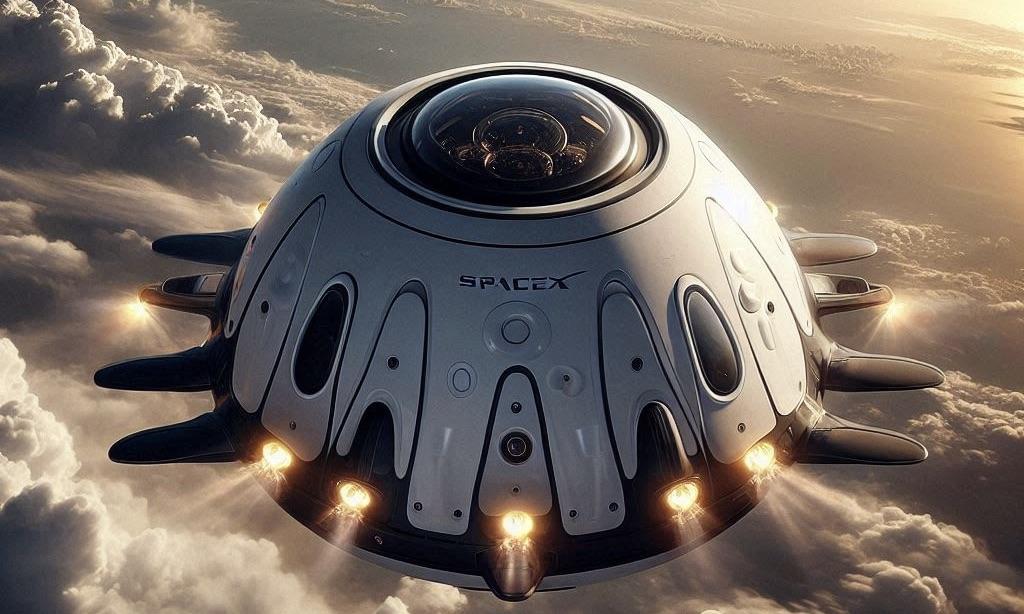SpaceX has introduced a significant safety enhancement to its Crew Dragon spacecraft, allowing the use of thrusters for emergency landings if parachutes fail. This new feature will be active in the upcoming Crew 9 mission, scheduled for launch tomorrow, as NASA and SpaceX continue their collaboration on crewed missions.
SpaceX Prepares for Crew 9 Launch with Enhanced Emergency Thruster Landing and Final System Checks
NASA's Commercial Crew Program manager, Steve Stich, and SpaceX's Vice President of Build and Reliability, Bill Gerstenmaier, have informed us that SpaceX has implemented substantial improvements to its Crew Dragon spacecraft, improving its safety features. During a Crew 9 press conference, the two individuals deliberated on these enhancements, emphasizing that the Dragon can now employ its thrusters to execute a gentle landing in an emergency. NASA and SpaceX are preparing to launch Crew 9 tomorrow, including two crew members and Boeing's Starliner astronauts. The crew is expected to return to Earth in February.
SpaceX conducted a static discharge of its Falcon 9 rocket and performed last-minute troubleshooting on the Crew Dragon before the launch. Stich stated that the chilled water system of the spacecraft, which serves as Dragon's cooling system, was the primary focus of troubleshooting. A breach had occurred, but SpaceX promptly resolved the issue.
Strong gusts in Florida resulted in an additional issue. Soot from the Falcon 9's engines, which typically dissipates over the ocean, was blasted back onto the Dragon spacecraft following SpaceX's static fire. After returning the vehicle from the launch site, SpaceX discovered soot and was required to sanitize its solar arrays and other components. Stich commended SpaceX's team for their prompt repainting and cleansing of the affected areas, emphasizing that the paint is essential for rejecting the Sun's heat and preserving the appropriate temperature in space.
Crew 9 to Use Recycled Booster as SpaceX Unveils Emergency Thruster Landing System for Safety
A second-flight booster will be employed in the forthcoming Crew 9 mission. SpaceX and NASA collaborated to certify the booster for reuse, resolving issues arising from a Falcon 9 upper-stage malfunction and a hard booster landing earlier in the year, which were uncommon for the company.
Crew Dragon's propulsive emergency landing capability is one of its most significant enhancements. Stich clarified that Dragon has a contingency system that activates in the event of parachute failure, which was implemented with Crew-8 and is now in Crew-9. If all primary parachutes fail, the Super Draco thrusters will activate just before the spacecraft's impact on the water, enabling an emergency soft landing to protect the personnel in dire circumstances.
Crew Dragon Certified for 210 Days in Orbit, Features New Emergency Thruster Landing System
The Crew Dragon has been certified for 210 days in orbit after extensive work on the spacecraft's windows, structure, rotating machinery, avionics, thermal protection, and propulsion systems.
Gerstenmaier provided additional details regarding the new emergency landing capability, emphasizing that it has been evaluated on prior Dragon flights; however, this will be its initial application in a NASA mission. In the event of a complete parachute failure, the thruster system is activated, enabling the crew to land securely. He underscored that the system is intended for extreme "deep contingency" scenarios, as Dragon can still land safely with one or more parachutes operational.
Furthermore, SpaceX acquired significant insights during the Polaris Dawn mission, its highest-altitude mission to date. Gerstenmaier disclosed that SpaceX conducted a depressurization contingency test and employed the high-radiation environment to create automatic sequences that rebooted and recovered hardware without crew intervention.
These enhancements and innovations serve as a testament to SpaceX's dedication to enhancing the safety and dependability of its Crew Dragon spacecraft, particularly in light of its ongoing collaboration with NASA on crewed space missions.



 Astronomers have discovered another puzzling interstellar object − this third one is big, bright and fast
Astronomers have discovered another puzzling interstellar object − this third one is big, bright and fast  Adobe Strengthens AI Strategy Ahead of Q4 Earnings, Says Stifel
Adobe Strengthens AI Strategy Ahead of Q4 Earnings, Says Stifel  SpaceX Starship Test Flight Reaches New Heights but Ends in Setback
SpaceX Starship Test Flight Reaches New Heights but Ends in Setback  Trump Criticizes EU’s €120 Million Fine on Elon Musk’s X Platform
Trump Criticizes EU’s €120 Million Fine on Elon Musk’s X Platform  Kennedy Sets September Deadline to Uncover Autism Causes Amid Controversy
Kennedy Sets September Deadline to Uncover Autism Causes Amid Controversy  EssilorLuxottica Bets on AI-Powered Smart Glasses as Competition Intensifies
EssilorLuxottica Bets on AI-Powered Smart Glasses as Competition Intensifies  FDA Lifts REMS Requirement for CAR-T Cell Cancer Therapies
FDA Lifts REMS Requirement for CAR-T Cell Cancer Therapies  NASA Partners with Katalyst to Save Swift Observatory with Innovative Docking Mission
NASA Partners with Katalyst to Save Swift Observatory with Innovative Docking Mission  Ancient Mars may have had a carbon cycle − a new study suggests the red planet may have once been warmer, wetter and more favorable for life
Ancient Mars may have had a carbon cycle − a new study suggests the red planet may have once been warmer, wetter and more favorable for life  Trello Outage Disrupts Users as Access Issues Hit Atlassian’s Work Management Platform
Trello Outage Disrupts Users as Access Issues Hit Atlassian’s Work Management Platform  Lab-grown meat: you may find it icky, but it could drive forward medical research
Lab-grown meat: you may find it icky, but it could drive forward medical research  Neuren Pharmaceuticals Surges on U.S. Patent Win for Rare Disorder Drug
Neuren Pharmaceuticals Surges on U.S. Patent Win for Rare Disorder Drug  Blue Origin’s New Glenn Achieves Breakthrough Success With First NASA Mission
Blue Origin’s New Glenn Achieves Breakthrough Success With First NASA Mission 






























